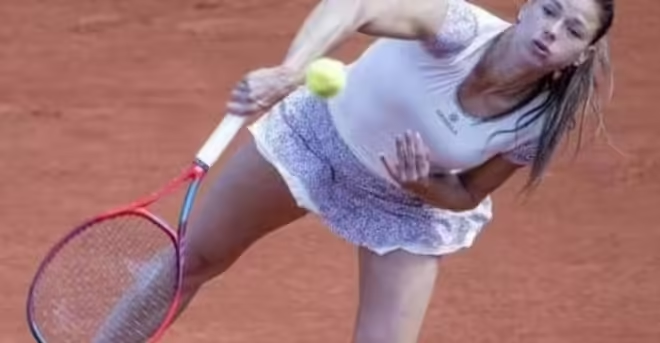
The French Open, one of the most prestigious events in tennis, recently found itself at the center of a wardrobe controversy involving a prominent female player. The incident, which saw the player instructed by the umpire to change her dress, has sparked debates about dress codes, gender equality, and the application of rules in professional tennis.
### The Incident
During a match at Roland Garros, the umpire interrupted the game to inform the player that her outfit violated the tournament’s dress code. The player, who was initially surprised and confused by the decision, was asked to either adjust or change her attire before continuing the match. The specific reasons cited for the dress code violation were not immediately clear, but the enforcement of such a rule mid-match raised eyebrows and led to significant media attention.
### Dress Codes in Tennis
Professional tennis has long maintained dress codes, aimed at preserving the sport’s traditional and professional image. Each Grand Slam tournament has its own set of guidelines, which players are expected to follow. These dress codes cover aspects like color, logos, and the overall style of the outfit. While the intention is to ensure uniformity and decorum, these rules have occasionally led to controversies, particularly when they are perceived as being enforced arbitrarily or disproportionately affecting female players.
### Reactions and Opinions
The incident at the French Open has elicited a range of reactions from players, commentators, and fans. Some argue that dress codes are essential for maintaining the sport’s professionalism and should be respected by all participants. Others, however, believe that such rules can be outdated and unnecessarily restrictive, particularly when they interfere with a player’s comfort and performance.
### Gender Equality and Fairness
A significant aspect of the debate revolves around gender equality. Critics argue that female players are often subjected to more stringent and scrutinized dress codes compared to their male counterparts. Instances like Serena Williams’ 2018 catsuit controversy, where she was told not to wear the outfit again at Roland Garros despite its medical benefits, are frequently cited as examples of double standards.
### The Player’s Response
The player involved in the recent incident handled the situation with professionalism, complying with the umpire’s request to change her attire. She later expressed her views on the matter, highlighting the need for clearer and more consistent guidelines. Her response has been praised for its grace under pressure, and it has opened up a broader conversation about how such situations should be managed in the future.
### Moving Forward
The controversy underscores the need for tennis authorities to revisit and possibly revise dress code policies to ensure they are fair, clear, and consistently applied. Open dialogues between players, governing bodies, and officials could lead to more reasonable and inclusive guidelines that respect both the traditions of the sport and the evolving standards of modern athletic wear.
### Conclusion
The French Open wardrobe controversy has shone a spotlight on the ongoing issues surrounding dress codes in professional tennis. While rules and traditions are important, the incident highlights the necessity for a balanced approach that considers players’ needs, comfort, and gender equality. As the sport continues to evolve, so too should its regulations, ensuring that they support rather than hinder the athletes who dedicate their lives to excelling on the court. This incident serves as a reminder that while maintaining the sport’s heritage is vital, adapting to contemporary standards and fairness is equally crucial.